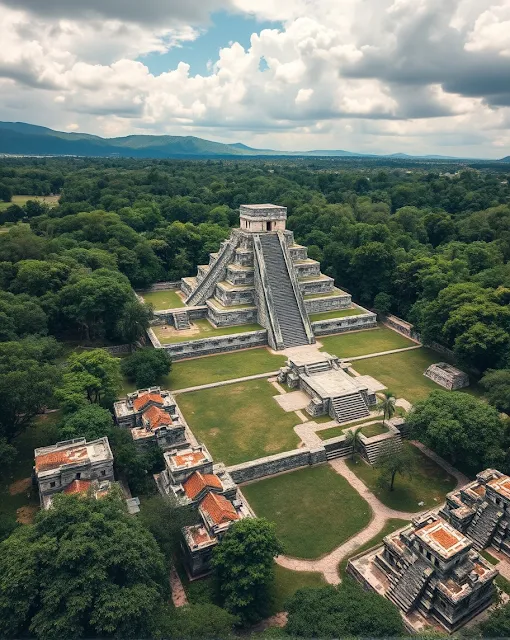A lost Maya city featuring temple pyramids, plazas, and a reservoir has been discovered in Mexico, hidden for centuries beneath dense jungle. This significant find in Campeche, a state in southeastern Mexico, was made possible through the innovative use of lidar technology, which employs laser mapping to reveal terrain hidden by dense forest cover.
Anthropologist Luke Auld-Thomas from Northern Arizona University initially theorized that lidar, although costly, could uncover unexplored Maya sites. Traditionally, archaeologists identified these sites through painstaking fieldwork, clearing thick vegetation with machetes to reveal ancient structures. In contrast, lidar technology can remotely scan large areas by projecting lasers from the air, creating detailed 3D maps of surface features.
Fortuitously, a lidar survey had already been conducted over 122 square kilometers of Campeche for environmental research in 2013. Auld-Thomas, collaborating with colleagues from Tulane University, Mexico’s National Institute of Anthropology and History, and the University of Houston’s National Center for Airborne Laser Mapping, analyzed this data to study roughly 50 square miles of previously unexplored land.
Their analysis revealed a network of previously unknown Maya settlements, including a major urban center they named Valeriana, situated near a freshwater lagoon. With two primary ceremonial complexes, Valeriana displayed classic features of a Maya political capital: multiple interconnected plazas, temple pyramids, a ballcourt, and a dammed reservoir.
"This region has remarkable hidden treasures," Auld-Thomas noted, pointing out that the discoveries included a large city with pyramids near a highway, in an area where locals have unknowingly farmed for years. This finding underscores that many Maya sites remain undiscovered, even in populated regions, hinting at a wealth of archaeological potential yet to be uncovered.
The team plans further field research to build on their lidar findings, hoping these ancient urban patterns can offer insights as modern cities confront rapid urbanization and environmental challenges. Auld-Thomas added, “Ancient cities were as diverse as they were complex, with some embracing sprawling agricultural layouts and others adopting dense urban forms. Studying these societies could broaden our understanding of sustainable urban living today.”
In 2018, the same technology uncovered tens of thousands of structures, irrigation canals, and extensive agricultural fields in Guatemala, suggesting a much larger Maya population than previously estimated, possibly reaching 10 million people, supported by massive-scale agriculture. These findings have reshaped our understanding of Maya civilization’s scale and sophistication, emphasizing the critical role lidar plays in archaeological discovery.
















.jpeg)

0 Comments